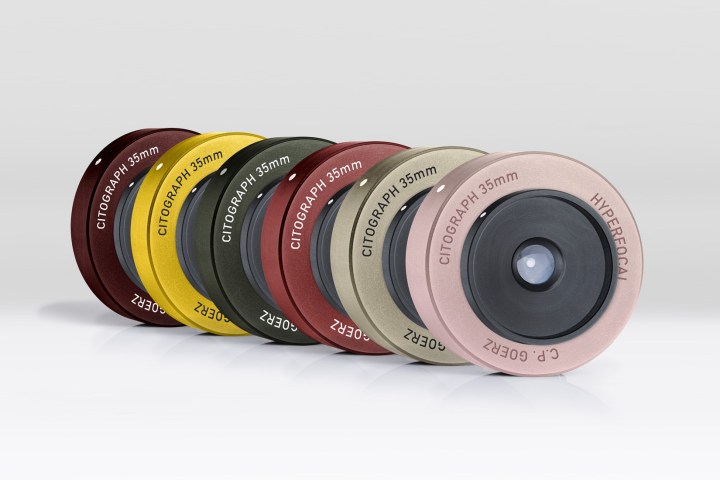
The Citograph, which stems from a Latin root word for spontaneous, aims to bring the speed of a fixed focus to higher-resolution digital cameras. The idea is the same one behind the lenses inside Polaroids and other instant film cameras. The lens is fixed to focus at infinity and the aperture is fixed at an f/8, which is narrow enough to keep a large portion of the image sharp — everything that’s farther than three meters or about ten feet from the camera will be in focus.
The concept isn’t a new one — the hyper-focal distance follows a similar concept but is a technique used with any lens, often for landscape photography. Fixed-focus lenses also remain popular for action cameras and 360 cameras.
However, the lens’ creator, street and portrait photographer Benedikt Hartmann, says the lens is the first always-in-focus lens for DSLRs and mirrorless cameras. Hartmann said he developed the lens to put the spontaneity back into photography, allowing photographers to shoot sharp shots without waiting for the autofocus. With no mechanics in the lens, the camera can shoot instantly, Hartmann says.
The lens is being branded by the C.P. Goerz American Optical Company, a group that produced film lenses from 1886 until the Europe-based company merged with Zeiss Ikon in 1926 and the American branch merged with Schnieder-Optics in 1972. As the first modern lens from a classic company that was absorbed by mergers, it’s unclear if the brand is just a purchased license, such as Kodak’s branded smartphones and tablets that aren’t actually produced by Kodak itself.
The lens uses a Tessar-type design for sharpness and contrast, designed from four elements in three groups. The Citograph lens is also designed for portability to continue building on that idea of spontaneity, weighing less than five ounces and measuring about 2.3 inches long. The lens is expected to be available for Nikon, Canon, Sony, Lecia M, Micro Four Thirds, and Fujifilm mounts.
With the prototype already finished and tested, the lens’ designers are looking to fund the production through a Kickstarter campaign, which just recently crossed its $30,000 goal. If the final testing and production is successful, backers can pick up the lens for pledges starting at $249. The lens will be produced somewhere in Asia and will ship from Germany.
Editors' Recommendations
- Nikon’s new 800mm lens for Z-mount cameras lightens the load
- Lightweight and low-cost, Fujifilm X-T200 and new 35mm lens target beginners
- A medium-format pancake? This 45mm lens is the lightest lens of its kind
- Meet the Nikkor Z 24mm, Nikon’s widest mirrorless lens optimized for low light
- With 6 stops of stabilization, the Fujifilm XF 16-80mm F4 focuses on versatility




